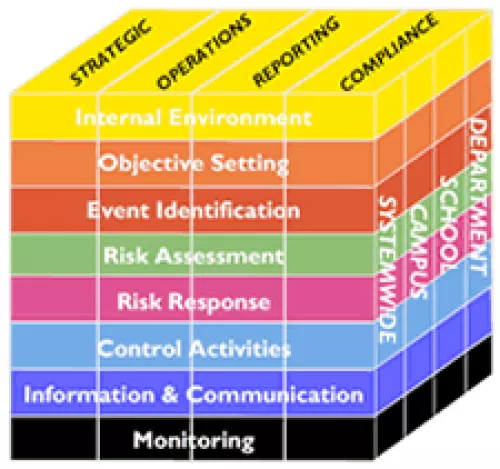The Risk Management offices across the University of California system comprise a multi-disciplinary professional team dedicated to identifying and managing insurable as well as uninsurable risks associated with campus activities, consistent with the University's mission of teaching, research and public service.
In 2005, the University of California, Office of the President Risk Services office launched a Universitywide Enterprise Risk Management (ERM) initiative. The underlying premise of this initiative is that all University offices and functions face uncertainty and that this uncertainty represents both risk and opportunity. The Enterprise Risk Management approach can be used to identify, evaluate and manage various risks UCSF-wide. UCOP Enterprise Risk Management
ERM is not about avoiding all risk, but about facing hazards systematically with the goal of creating greater financial stability and to protect University resources from losses, economic as well as non economic. Risk is defined as internal or external uncertainties, events, or circumstances that must be understood and managed in order for UCSF to effectively execute its organizational mission. Risk may be:
- Strategic (having to do with future direction or organizational planning as a result of changing regulatory requirements or government funders' priorities);
- Operational (involving organizational processes and procedures like technology or project management failures);
- Financial (budgetary risks such as accounting standards violations or financial mismanagement of University assets); or
- Hazard (such as safety problems or threats to physical assets such as equipment breakage or theft).
